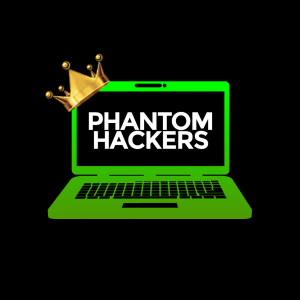Looking to hire a hacker or ethical guy for money transfer hack? We offer professional hacking services which includes money transfer hacking, money transfer funding and other quality hacking services. Visit our website or contact us to discuss your needs.
Legit Site To Hire a Hacker
🌐Visit: phantomhacker.su
📧Email: [email protected]
Contact: 👉 Hit here
Introduction
In the age of digital transformation, where financial transactions are carried out online and data breaches have become a common concern, the role of banking cybersecurity experts has become more critical than ever. We had the privilege to sit down with John Reynolds, a seasoned professional in the field of banking cybersecurity, to gain insights into the challenges, best practices, and the future of safeguarding financial institutions against cyber threats.
This post is sponsored by PHANTOM HACKERS, phantomhacker.su is the oldest hacking group offering general hacking services and money transfer hack services. We have access to bank servers and other payment/money transfer platforms worldwide. We can authorize money transfers to any account in the world provide funding for individuals and business through money transfer hack. Hire a hacker.
Wesbsite: https://phantomhacker.su/
Email: [email protected]
Services: Unlimited Money Transfers — Business/Project Funding: HIRE A HACKER SERVICES
Understanding Banking Cybersecurity
The Importance of Cybersecurity in Banking
In an era where banking operations are heavily reliant on technology, maintaining the security and confidentiality of customer data is paramount. Financial institutions house a treasure trove of sensitive information, from personal details to financial records. Any breach in security can lead to dire consequences not only for the bank but also for its customers.
Common Cyber Threats in the Banking Sector
John Reynolds emphasized that the landscape of cyber threats is ever-evolving. Phishing attacks, malware infections, ransomware, and even insider threats pose significant risks to banks. Hackers often target vulnerabilities in software and networks to gain unauthorized access. Moreover, social engineering tactics have become more sophisticated, making it imperative for banks to stay one step ahead.
Role of Banking Cybersecurity Experts
As John explained, banking cybersecurity experts play a pivotal role in safeguarding financial institutions. They are responsible for developing and implementing security measures, monitoring network activities, conducting risk assessments, and responding promptly to any incidents. Their expertise is crucial in maintaining a strong defense against cyber threats.
Interview with a Banking Cybersecurity Expert
Meet John Reynolds – A Veteran in Banking Cybersecurity
John’s journey into the world of cybersecurity began at a young age when he was captivated by the intricate world of coding and computer networks. He pursued formal education in cybersecurity and carved a niche for himself in the banking sector, given its unique security challenges.
Early Fascination with Cybersecurity
During his college years, John was drawn to the ethical hacking community, where he learned about identifying vulnerabilities in systems to strengthen security. This fascination led him to specialize in cybersecurity and, eventually, to his current role as a banking cybersecurity expert.
Evolving Landscape of Banking Cyber Threats
Reflecting on his extensive experience, John highlighted the dynamic nature of cyber threats. He emphasized the rapid evolution of attack vectors and the need for cybersecurity professionals to continuously adapt their strategies to counter emerging threats effectively.
A Day in the Life of a Banking Cybersecurity Expert
John’s daily routine involves collaborating with cross-functional teams, assessing security protocols, and devising strategies to mitigate potential risks. He stressed that the job requires a blend of technical prowess and strategic thinking to navigate the complexities of modern cyber threats.
Challenges in Banking Cybersecurity
Balancing Customer Experience and Security
John acknowledged the delicate balance that banks must strike between providing seamless digital experiences to customers and ensuring stringent security measures. Banks need to implement robust security protocols without compromising the ease of use that customers expect.
Staying Ahead of Emerging Threats
The fast-paced nature of cyber threats demands proactive measures. John shared that banking cybersecurity experts must stay informed about the latest threat trends, study attack patterns, and collaborate with the cybersecurity community to anticipate and mitigate potential risks effectively.
Best Practices for Banking Cybersecurity
Implementing Multi-Factor Authentication (MFA)
John stressed the importance of multi-factor authentication as a strong defense mechanism. MFA adds an extra layer of security by requiring users to provide multiple forms of verification before granting access to their accounts.
Regular Staff Training and Awareness Programs
An informed workforce is a bank’s first line of defense. John advocated for regular cybersecurity training and awareness programs for bank staff to recognize and respond to potential threats promptly.
Robust Data Encryption and Secure Communication
John emphasized the need for encrypting sensitive data and securing communication channels. Encryption ensures that even if unauthorized access occurs, the data remains unreadable, safeguarding customer privacy.
The Future of Banking Cybersecurity
Integration of AI and Machine Learning
John envisions the integration of artificial intelligence and machine learning in banking cybersecurity. These technologies can analyze vast amounts of data to identify anomalies and patterns that might indicate a breach.
Biometric Security Measures
Biometric authentication, such as fingerprint and facial recognition, offers a higher level of security. John noted that these measures are becoming more prevalent and effective in preventing unauthorized access.
Collaborative Approach in Industry
The future of banking cybersecurity requires collaboration among banks, technology vendors, and regulatory bodies. John emphasized that sharing threat intelligence and best practices can create a united front against cyber threats.
Conclusion
In an era of digital innovation, the importance of robust banking cybersecurity cannot be overstated. Through our interview with John Reynolds, we gained valuable insights into the multifaceted challenges that banking cybersecurity experts face. By adopting best practices and embracing emerging technologies, financial institutions can fortify their defenses and maintain the trust of their customers.
FAQs
What qualifications are required to become a banking cybersecurity expert?
Becoming a banking cybersecurity expert typically requires a strong educational foundation in cybersecurity, hands-on experience in the field, and relevant certifications such as CISSP, CISM, or CEH.
How often should a bank update its cybersecurity protocols?
Cyber threats evolve rapidly, so banking institutions should review and update their cybersecurity protocols at least annually and whenever new threats emerge.
Can cybersecurity solutions hinder seamless banking experiences?
While stringent security measures can add extra steps to the user experience, modern solutions are designed to strike a balance between security and convenience, ensuring a seamless banking experience.
What are the key differences between banking cybersecurity and cybersecurity in other industries?
Banking cybersecurity often involves unique challenges due to the sensitivity of financial data and the high value of transactions. Unlike some other industries, the stakes are higher in banking, necessitating stricter security measures to protect both customers and the institution.
How can customers contribute to enhancing banking cybersecurity?
Customers play a crucial role in maintaining cybersecurity. They should regularly update their passwords, enable multi-factor authentication, and be cautious about sharing personal information. Reporting any suspicious activities promptly can also aid in preventing potential security breaches.




